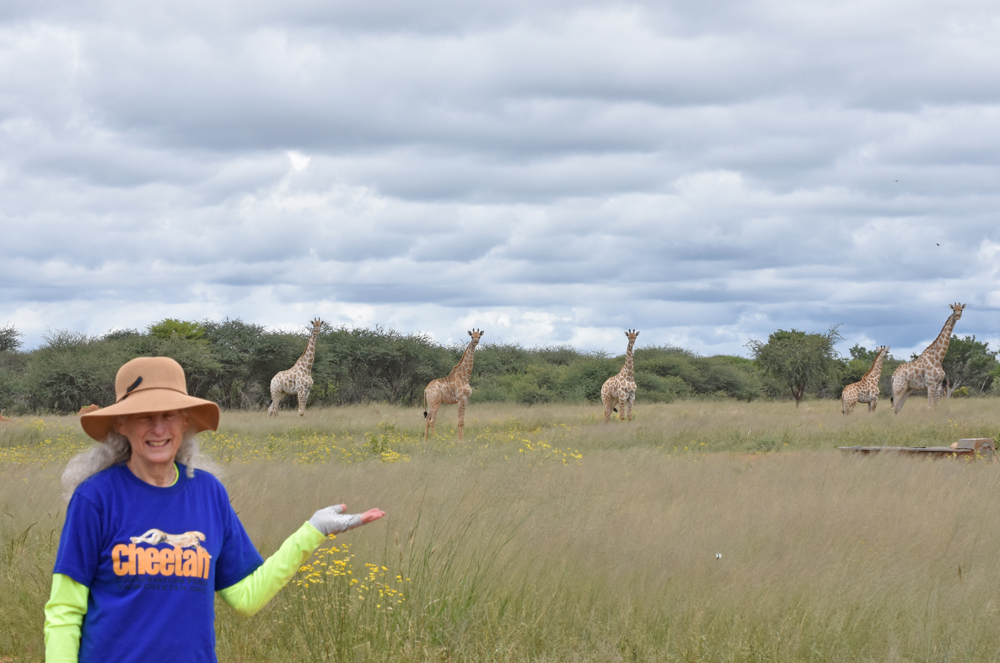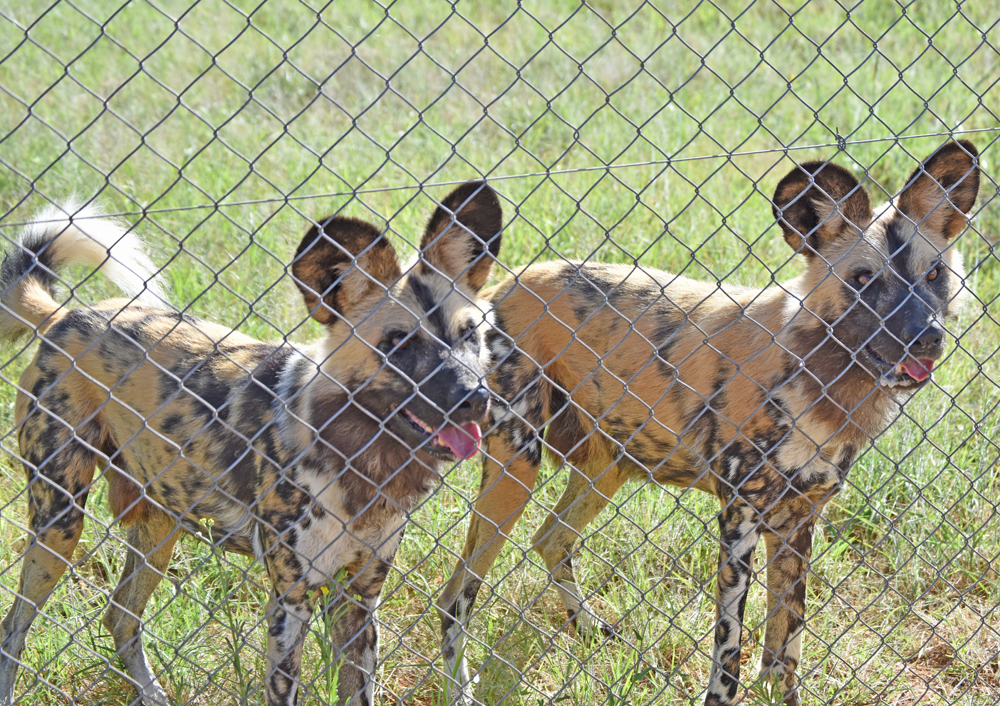Cheetah Conservation Fund, Namibia
By Nancy:


I have long been fascinated with wild big cats, and have wanted to spend time close to them. About 20 years ago I had read about Lauri Marker, the founder of Cheetah Conservation Fund, CCF, who was working with cheetahs in Namibia. I had written down the name on my wish list. About three years ago I was watching an adventure travel show. The host was visiting CCF in Namibia. I quickly got out my wish list and saw it was the same place. That began my effort to volunteer at CCF. Originally I was booked and ready to go in March of 2020, but three weeks before departure Covid appeared and all my plans were canceled. I spent the next two years waiting for the virus to wane, then for vaccinations, and finally a booster. By January of this year the time seemed right, and I confirmed that CCF could take me. I re-booked my flights.

I was scheduled to arrive at CCF early in the afternoon, but due to flight delays I arrived in Windhoek at 6:00 pm. My CCF driver was waiting for me and we drove the 3.5 hours mostly in the dark, and arrived at 10:30 pm at CCF. My first cheetah experience was viewing one of the two wild cheetahs that were wandering the campus, crossing the road near my lodging. A great start to my one month stay!


CCF has about 30 cheetahs that it keeps in captivity. Most come as small cubs who have lost their mothers and never learned the necessary skills they would need to survive on their own. This means they can never be released into the wild. The Namibian Government has made breeding cheetahs illegal in Namibia and sale of cheetahs outside of Namibia illegal as well. Cheetahs can only go to other parks or preserves within Namibia. This means that most of the young cheetahs that are brought to CCF, usually when they are less than 6 months old, will never be released to the wild, and will remain in the country.


In addition to rescuing abandoned or injured cheetahs, CCF has a guard dog program. Anatolian Shepard and Kangal dogs are bred with the purpose of providing the dogs to farmers to protect their livestock and prevent the need to kill a cheetah. Cheetahs, mostly solitary hunters, are easily scared off and the presence of a large barking dog helps keep them away from livestock. CCF also has a Model Farm, raising goats. Their Dancing Goat Creamery produces cheese and ice cream. (I put in request for a new flavor, Coffee, which they made and was a big success!) After being weened the puppies are raised with the goats, and when placed on a farm they learn to bond with the herd. You can learn more about these programs on CCF's website, cheetah.org.


The question I got asked most before my departure was what I'd be doing while at CCF. I didn't know, but I was soon to find out. I woke up my first morning to the loud songs of birds outside my door. Breakfast was at 7:00 am at the outdoor "Hot Spot" where all meals were served. Each evening the next day's duties for each of the Interns and volunteers are posted. I had two main duties; either helping feed and walk the dogs and/or feed the captive cheetahs.

Visitors to CCF are offered three cheetah activities: Cheetah Run where guests can experience close-up the cheetah's magnificent speed as they "hunt" a specially made lure; Cheetah Drive through one of the large enclosures to meet cheetahs; and Cheetah Feeding of nine of the cheetahs who are kept close to the main area and fed in enclosed pens. I loved observing the cheetahs after they are fed and just laying around - I'd close my eyes and listen to them purr and meow - just big pussy cats.


Besides feeding animals, I especially liked going out with the Ecology group to check on cameras placed at watering spots, and I participated in the CCF game count which is done at the end of each month. Each of these activities involved getting away from the main campus area and seeing animals roam through the thousands of acres CCF owns.

Periodically a staff member arranges a night drive for staff, interns and volunteers. During my stay I was able to go on three night drives. Some animals are only visible at night, but I found that the opportunities I had to go out in the field provided me with more opportunities to view the wildlife.


The average age of the interns and staff is 20 - 30 years old. The first two weeks that I was there I was the only volunteer until two others arrived, each staying for a two week period. Half of the interns are from other countries and are working on programs through their university. The other half of the interns are Namibian, who are offered a free intern program. I especially enjoyed meeting the Namibian interns and staff, who always had a greeting with a smile, and learning about their culture.



In 2020 I had a few short trips planned within Namibia before and after my stay at CCF. But when my flights were canceled and I was unable to travel I lost the money that had been prepaid. I decided when making my plans for this departure that I would only stay at CCF and not make any other travel plans within Namibia. But a schedule change in my return flights delayed my departure by an extra day.


After being at CCF for three weeks I began to think about maybe leaving a few days early to visit Etosha and Waterberg National Parks. Both within a few hours drive of CCF. It was the off-season for both parks, and I was able to see animals that I had not seen while at CCF.






0 Comments:
Post a Comment
<< Home